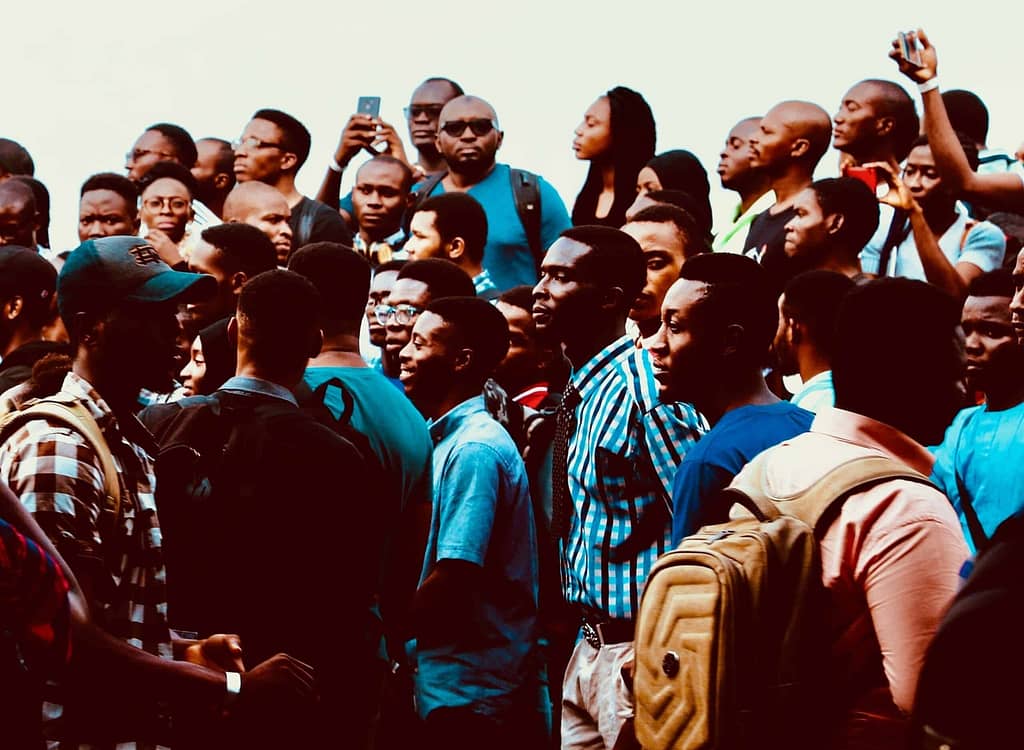The last few months have seen social media posts proclaim the viability of candidates based on how big their crowds are. Candidate X brings Lagos to a standstill! Standing room only as Candidate Y fills the city stadium! Come and see the empty arena for Candidate Z!
But truly, how effective are crowds as a gauge of popularity?
The cop-out answer is that it does and it doesn’t. In some countries, crowd enthusiasm can be a genuine indicator of how popular a candidate is. A prime example of this would be Donald Trump’s first run for the US presidency in 2015-2016. He drew huge crowds, Hilary Clinton didn’t. Trump went on to win that election.
Let’s leave aside the fact that he didn’t win the popular vote, as that would ruin this argument. In the run up to the 2020 elections when the US was ostensibly in lockdown due to the COVID-19 pandemic, crowds again told a story about the campaigns.
President Trump’s supporters were more likely to be anti lockdown, whereas President Joe Biden’s were more likely to eschew mixing with crowds during a pandemic. In the end, these crowds didn’t correlate with the final result, which was a decisive Biden victory.
In Nigeria, President Muhammadu Buhari has always drawn huge crowds. All the way back in 2011, the CPC candidate as he was then, was hugely popular in the north. He did lose that election, then again they were neither the freest nor the fairest.
But it laid the groundwork for his viability four years later. It’s also worth remembering that people who attend rallies are the most enthusiastic supporters who drop whatever they’re doing to go and see a candidate. They’re the diehards, the Atikulated, the Batified, and the Obidient.
They’re not indicative of the wider support beyond their own band of followers.
All this is assuming there are no “inducements” to attend rallies, when we all know election campaigns are given to the dark arts of politics.
Politiques du ventre plays out in a form during election season, whether it’s money to attend rallies, vote buying, vote buying masquerading as rally swag, money to snatch ballots, money to falsify results, stomach infrastructure to do what is wrong.
In Gnassingbe Eyadema’s Togo of the 1990s, major roads would be closed off, sometimes up to an hour before the president’s convoy drove through.
Shortly beforehand a coterie of women would be sweeping the streets, making it fit for a king’s traversal. Everything would come to a literal standstill, as you weren’t allowed to walk while the president was about to pass – or not.
Sometimes it would come to naught because the convoy would take a different route to throw off any potential enemies.
Unfailingly, however, if the motorcade came by, the sweepers would applaud the president as he drove by.
And sometimes the evening news would explain how the glorious leader had been spontaneously greeted enthusiastically as he went about his business.
Did the market women receive an incentive to applaud? You decide.
Speaking of applause, the British Labour party of the 2000s had what could only be described as “strategic clappers” at political speeches by leaders such as the prime minister, Tony Blair.
They were placed at various parts of an audience and at the delivery of a perhaps predetermined line, they would start to applaud.
And applause is contagious, nobody wants to be the surly one sitting on their hands when you’re at an event full of the politician’s supporters. The person next to you starts applauding and doesn’t stop, so now you start applauding too. It’s not for nothing that applause or clap lines are written into political speeches.
As the cliche goes, the only poll that matters is the one on polling day. Beware the wisdom of crowds.


Leave a Reply